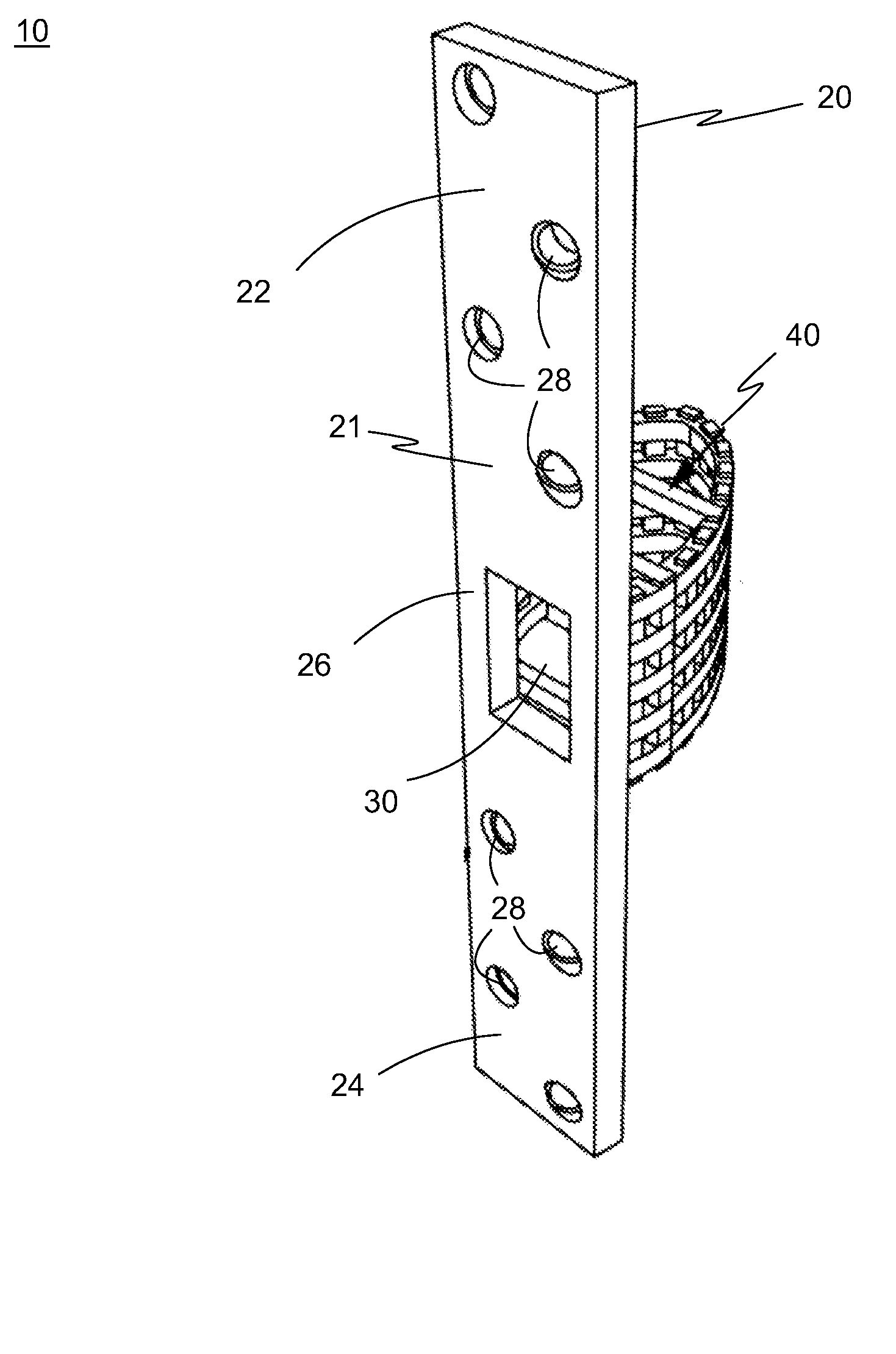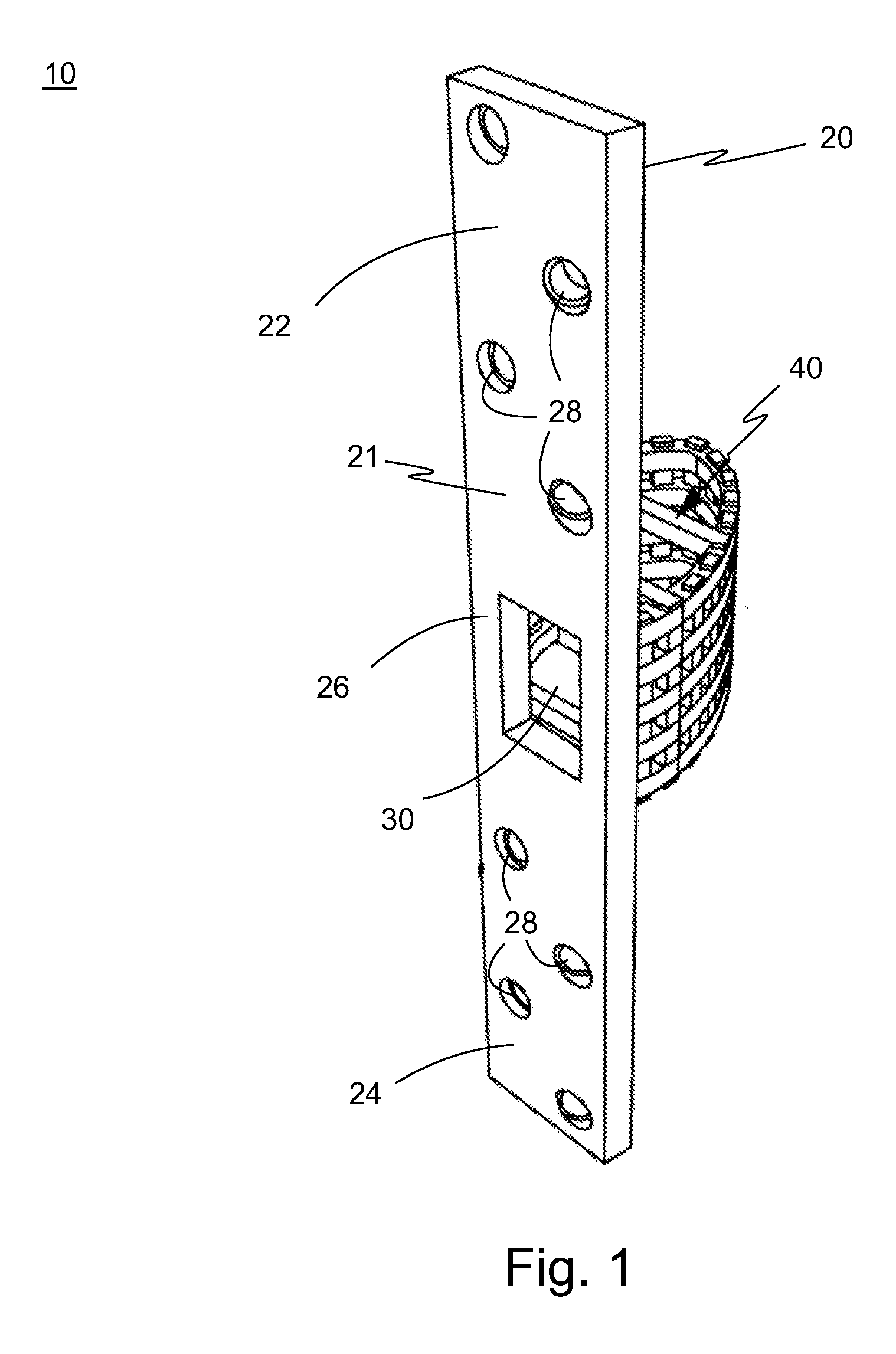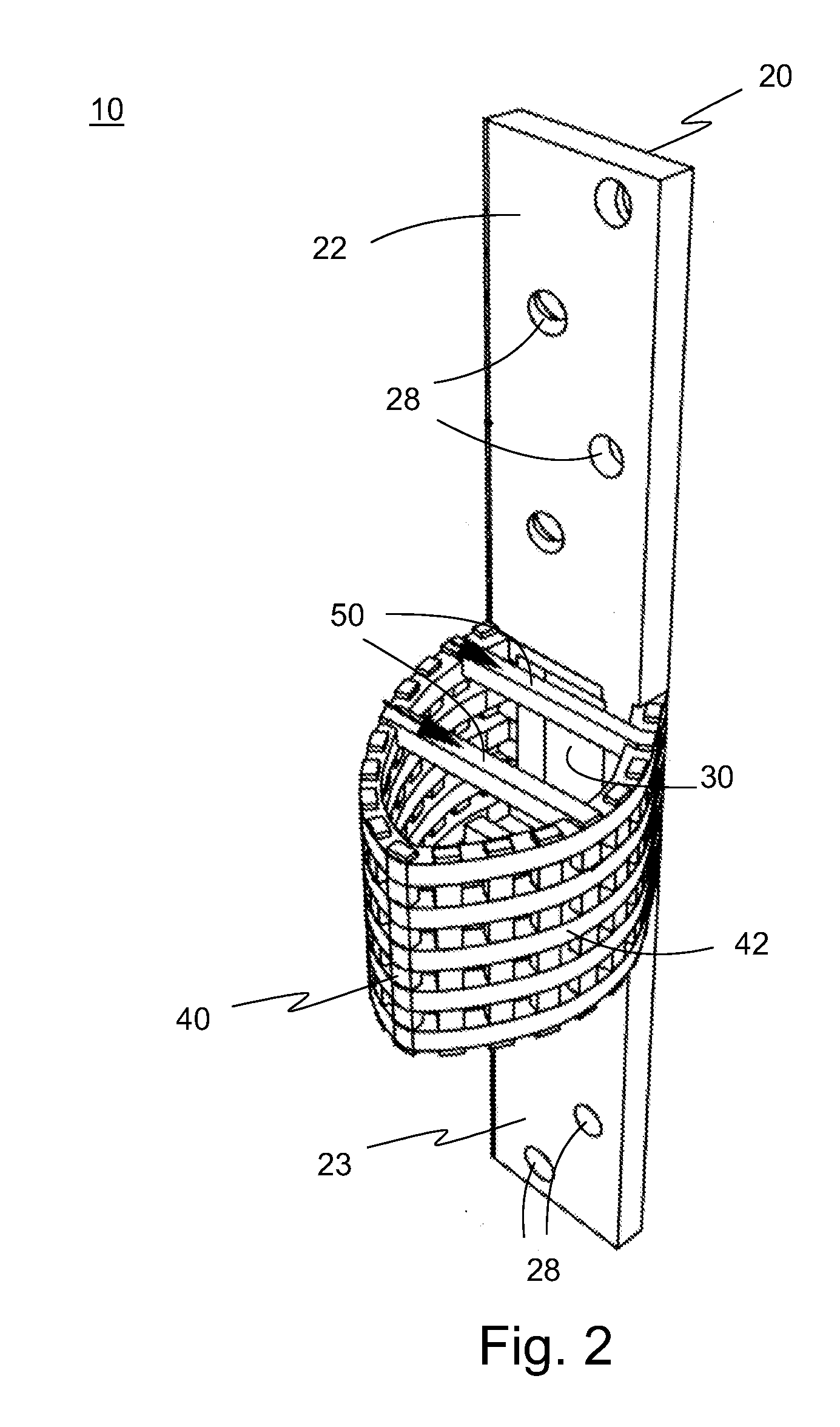Bone Loss Plate
a bone loss plate and plate technology, applied in the field of medical implants, can solve the problems of cages bone does not heal, and plates cannot close gaps between fractured ends of severely damaged bones, so as to prevent cages from moving out of position, and maintain bone alignment of fractures.
- Summary
- Abstract
- Description
- Claims
- Application Information
AI Technical Summary
Benefits of technology
Problems solved by technology
Method used
Image
Examples
Embodiment Construction
[0020]The preferred embodiment of the present invention is illustrated in FIGS. 1-4. FIG. 1 shows a perspective back view of the bone loss plate 10 of the present invention. Bone loss plate 10 has a fixation plate 20 showing a second plate side 21 and a tubularly-shaped containment cage 40. Fixation plate 20 has a proximal portion 22, a distal portion 24 and a middle portion 26. Proximal portion 22 and distal portion 24 have a plurality of fastener openings 28. Middle portion optionally includes a cage aperture 30 and provides access to the inside of tubularly-shaped containment cage 40.
[0021]For example, to treat a tibial fracture in an average adult male, proximal and distal portions 22, 24 of plate 20 are typically about 4 mm. thick, about 20 mm. wide and about 40 mm. long. The plurality of fastener openings 28 in proximal and distal portions 22, 24 also have four or more holes approximately 4 mm. in diameter through which fasteners such as, for example, screws are used to fixedl...
PUM
 Login to View More
Login to View More Abstract
Description
Claims
Application Information
 Login to View More
Login to View More - R&D
- Intellectual Property
- Life Sciences
- Materials
- Tech Scout
- Unparalleled Data Quality
- Higher Quality Content
- 60% Fewer Hallucinations
Browse by: Latest US Patents, China's latest patents, Technical Efficacy Thesaurus, Application Domain, Technology Topic, Popular Technical Reports.
© 2025 PatSnap. All rights reserved.Legal|Privacy policy|Modern Slavery Act Transparency Statement|Sitemap|About US| Contact US: help@patsnap.com



